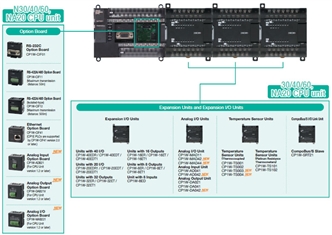The CP1E provide high cost performance to further reduce costs by allowing you to select the optimal CPU Unit from the E[][]S-type Basic Models or N/[][]S(1)-type Application Models.
CP1E
CP-series CP1E CPU Units
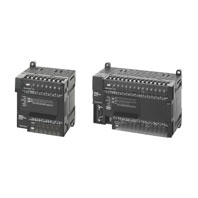
Cost-effective CP1E with Enhanced Expandability for Analog and Temperature Control
about this Product Family
- Features
- Lineup
- Specifications
- Dimensions
- Catalog
last update: January 05, 2015
Cost-Effective, Easy Application, Application to Many Systems
Exceptional Cost
Responding to Global Competition with More Device Control Possibilities
Windows is registered trademarks of Microsoft Corporation in the USA and other countries.
Other company names and product names in this document are the trademarks or registered trademarks of their respective companies.
Simple and User Friendly
Intuitive control with “Smart Input.”
Easy to use input editor with smart input function [All Models]
When you begin typing an instruction from the keyboard in Ladder Editor Mode,suggested instructions are displayed and the addresses are automatically entered.
Connecting lines are added automatically based on the cursor position, enabling intuitive ladder programming.
Easy Input Editor
Instruction and Address Input Assist Functions
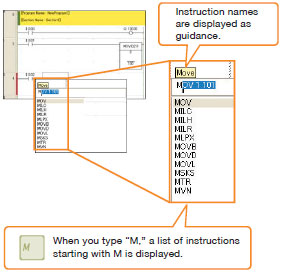
When you begin typing an instruction from the keyboard while in the Ladder Editor Window, suggested instructions are displayed. All you have to do is select the instruction from the list for easy input even if you do not remember the entire mnemonic.
Address Incrementing
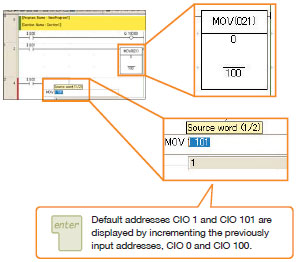
The address of the next operand, including input bits and output bits, is incremented by one and displayed as the default. This enables easily inputting consecutive addresses.
User-friendly Ladder Program Input
Automatic Connecting Line Insertion
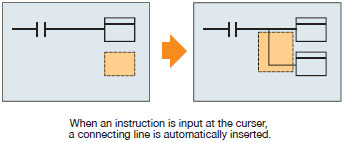
With the automatic connecting line insertion function the necessary connection is added automatically based on the curser position.
Automatic Column Insertion When Inserting Instructions

The column is automatically inserted when an instruction is added even if the curser is above another instruction.
Easy to reuse ladder programming
Copying with Address Incrementing

To create the same group of ladder instructions more than once with the address addition copy function, the instructions can be reused simply by inputting an address offset.
Intuitive Menu Structure
Intuitive Menu Display
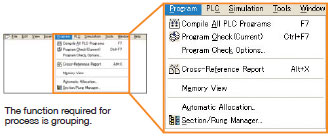
An intuitively designed menu structure makes it easy to see the overall system simply by looking at the menu for smooth operation without referring to a manual.
Only commercially available USB cables required [All Models]
All CP1E CPU Units use high-speed USB for the peripheral port. Support software (computers) can be connected using commercially available USB cables. Without the need for USB conversion cables or special cables, connection is easier and cable cost is low.

The depth of CPU Units with RS-232C connectors is reduced by 20 mm [Renewal type]
6 mm slimmer than the normal type.
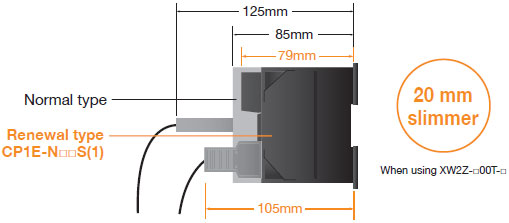
Efficient and Effective
Flexibly handle even small-scale systems.
Various Option Units available for increased expandability.
More Applications with AdvancedControl Capabilities and Functionality [Application Models]
The Application Models (CP1E-N[][]/N[][]S(1)) are equipped with high-speed counters, pulse outputs, and a built-in serial port(s).
In addition, using the Expansion Unit and Option Board, you can control a wide range of devices.
Pulse Outputs [Models with transistor Output]
Two 100kHz pulse outputs for high-precision position control.

High-speed Counters*
Control multiple axes with one PLC using the two 100kHz and four 10kHz, single-phase high-speed counters.
* The Basic Models are equipped with six 10kHz, single-phase high-speed counters.
Modbus-RTU easy master
Specify Inverter speeds via RS-485
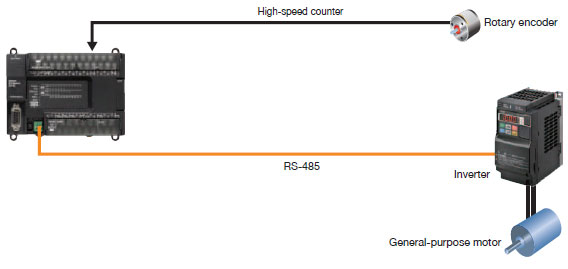
Analog I/O Control
High-accuracy analog I/O control with a resolution 1/12,000.
You can add up to 4 analog I/O by mounting an Analog Option Board and up to 24 analog I/O by connecting Expansion Units.
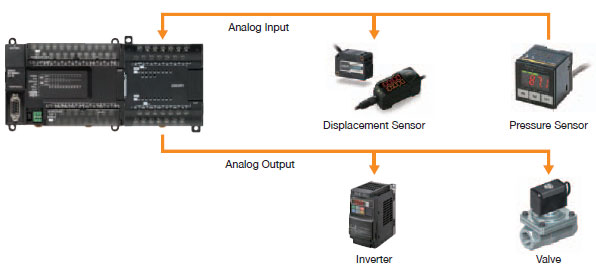
Temperature Control
The combination of the Temperature Input Unit with the PID instructions enables temperature control.
Up to 12 thermocouple inputs per Unit for CP1W-TS004.
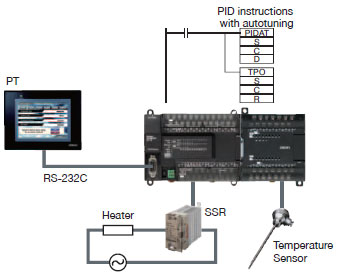
The CP1W-TS003 has two inputs that can be used for temperature sensor or analog inputs.
Both temperature sensor and analog inputs can be achieved with only one Unit.
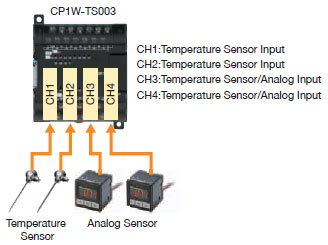
Serial PLC Links
Link data with up to 10 words between up to nine CP1E-N CPU Units when controlling a device with multiple CP1E-N PLCs.
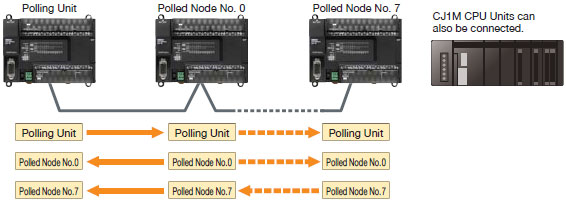
Ethernet Communications
Mount a CP1W-CIF41 Ethernet Option Board to an option board slot on the CP1E-N/NA type CPU Unit.
Perform monitoring and programming with CX-Programmer,or communicate with a host computer via Ethernet.(server function only)
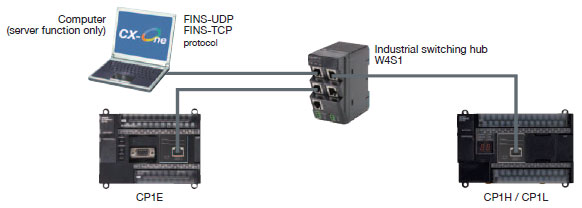
Optional units for more flexibility
An option board for an additional Serial or Ethernet communication port can be added to the N30/40/60 and NA20 CPU Unit. Three expansion units are available.
* The Option Board cannot be mounted to the CP1E-N□□S/N□□S1.
last update: January 05, 2015





